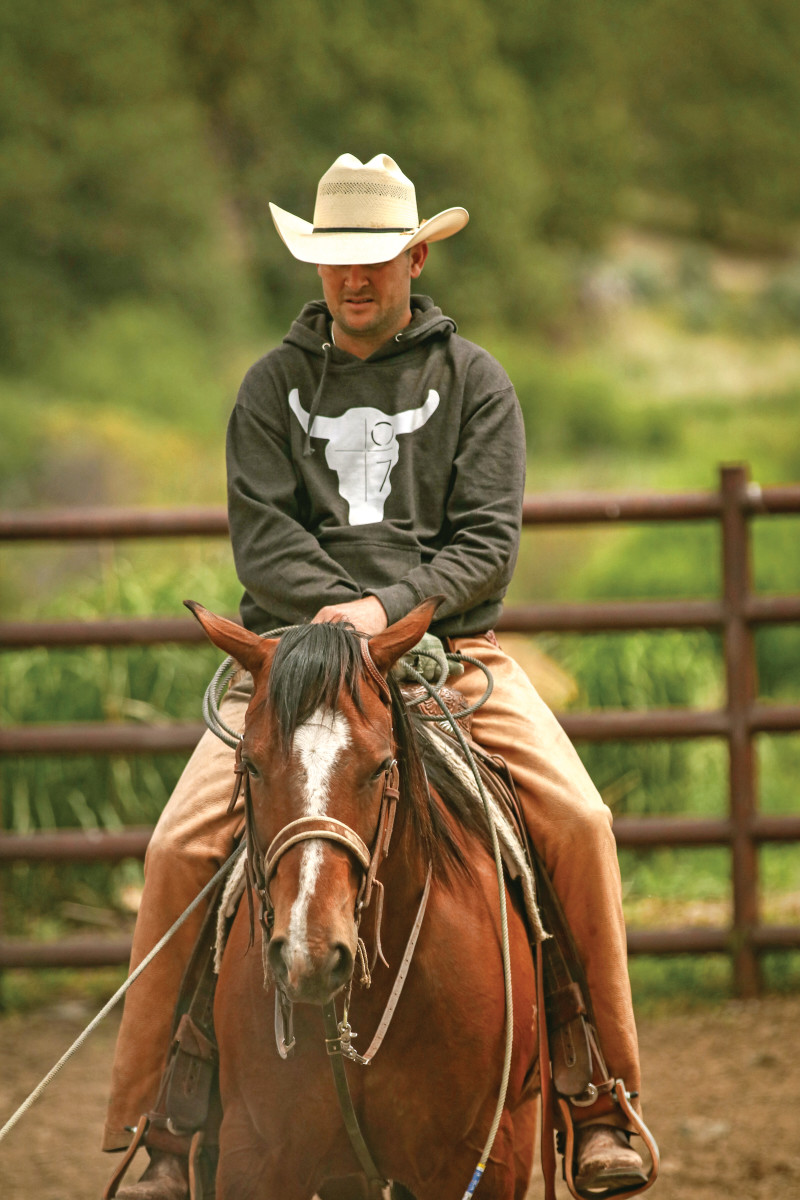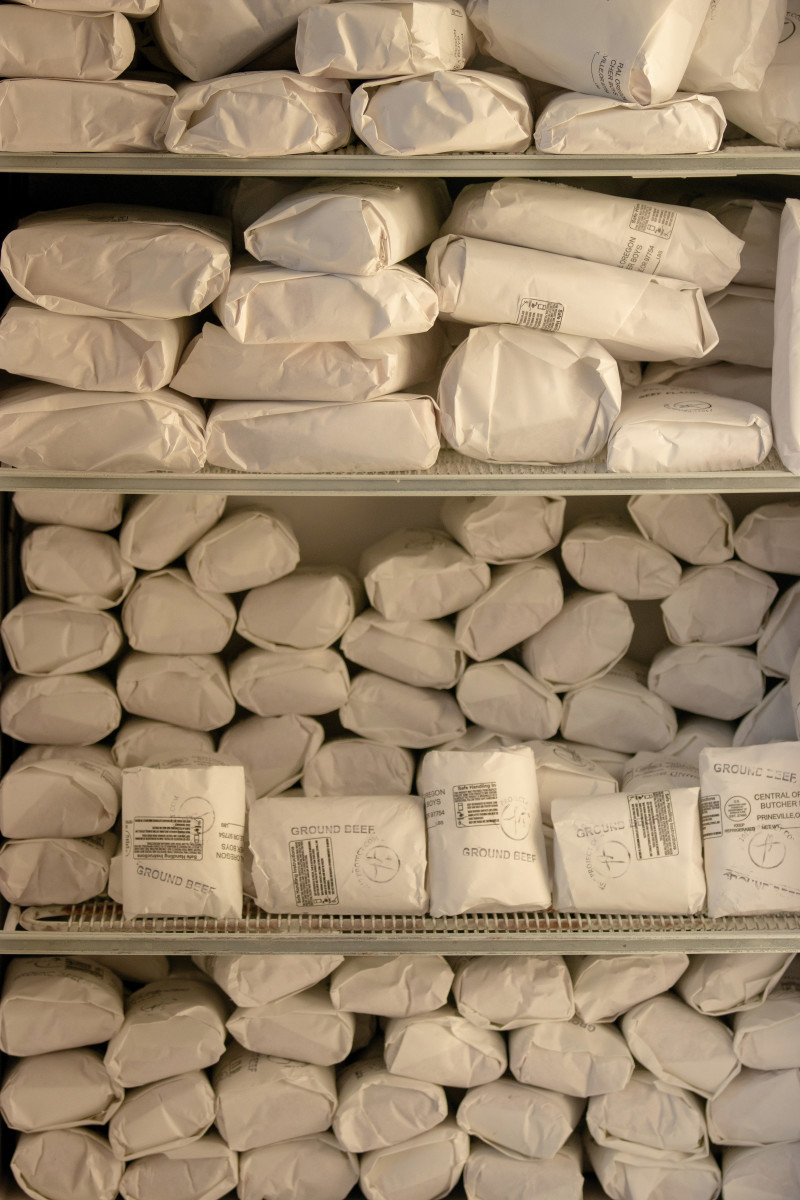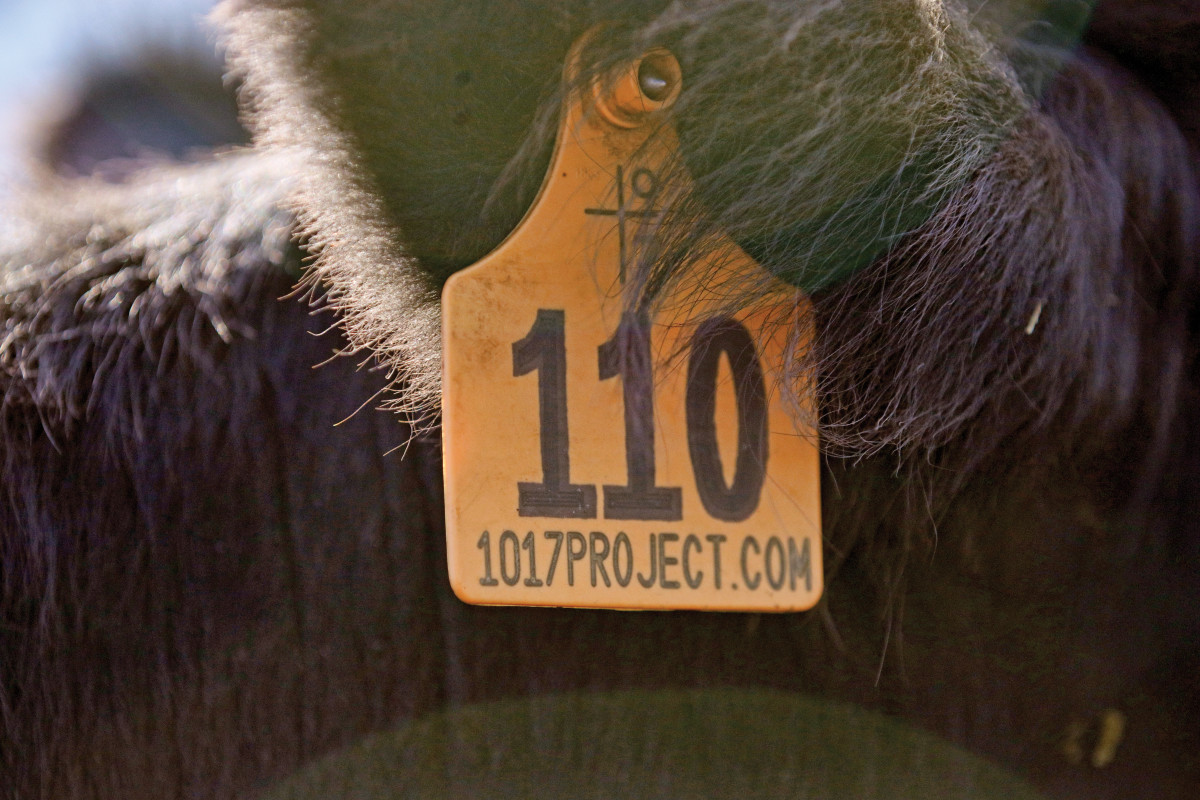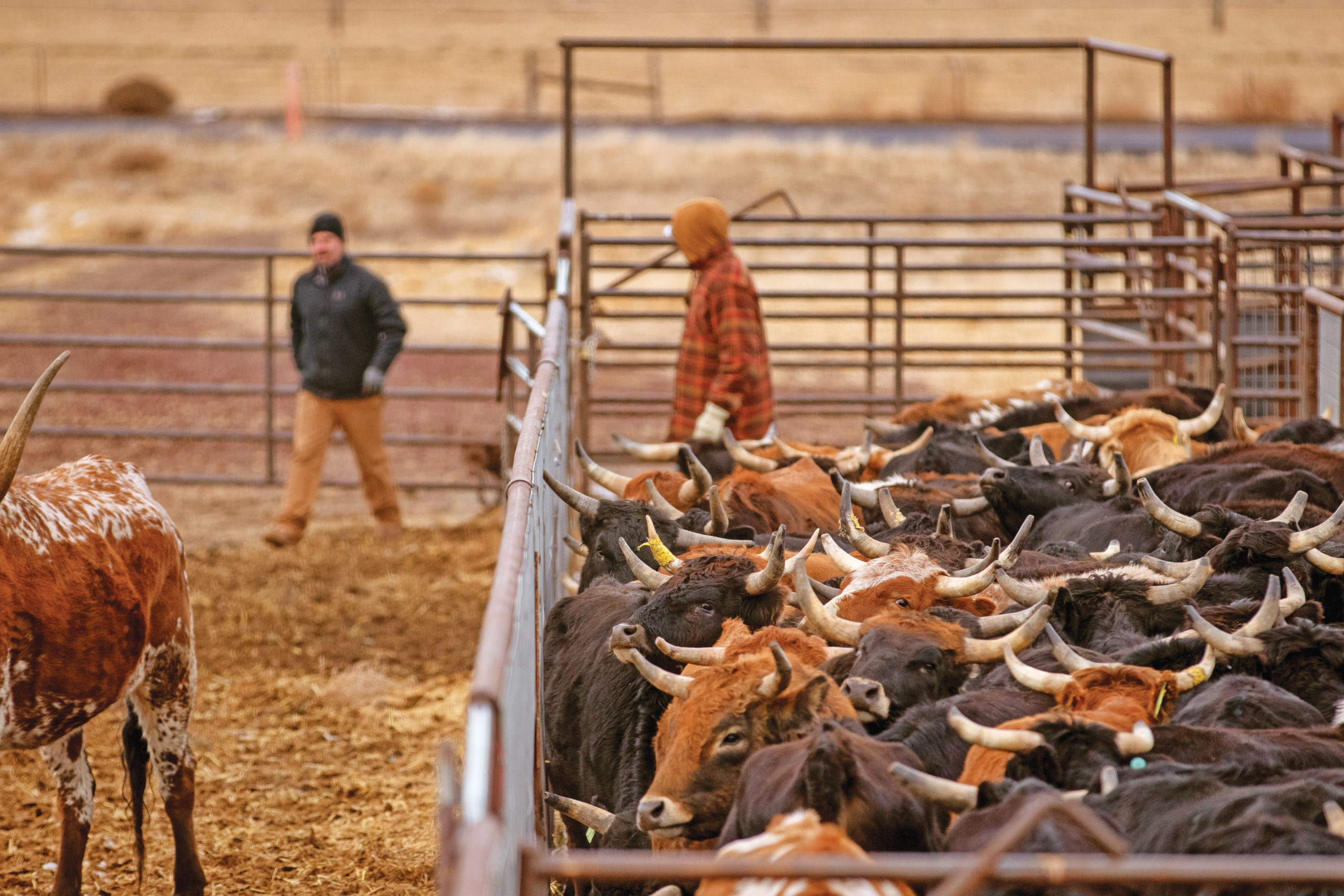The very best businesses are the ones in which everybody wins. Such is the case for the Oregon-based 1017 Project, which addresses both the age-old issue of what to do with worn-out roping steers and how to feed the hungry in this land of opportunity we all call home. The concept was born under the brim of Jordan Weaver’s cowboy hat, when he combined his love of team roping with his passion for helping people.
The mission of The 1017 Project is “to provide a sustainable supply of high-quality beef to local food banks and other entities feeding food-insecure families while uniting the culture of each local community we serve.” Texas-native Weaver—who’s originally from Fort Worth and grew up roping calves before injuries made team roping make more sense—moved to Powell Butte, Oregon, after he “married the prettiest girl in Oregon.” He followed in the career path of his family forefathers from there.
[DONATE: Contribute to The 1017 Project’s Cause]
[LISTEN: The Score: Season 2, Episode 7 with The 1017 Project’s Pastor Jordan Weaver]
“My dad, my uncle and grandpa were pastors,” said 1017 Project Executive Director Weaver. “The joke was that I had a drug problem—as a kid I got drug to church every time the doors opened.”
Pastor Jordan and his wife, Lacey, opened Shiloh Ranch Church in 2012. The church’s first home was a leased café at a local events center, which it quickly outgrew when the church goers doubled from 250 to 500. They built the current church—and the roping arena that goes with it—in 2014.

Courtesy 1017 project
“This is a very rural ranching community, and our church is for people who had not found a home in any other church,” explained Weaver, who mostly heads when they wrap the steers. “The people up here are salt-of-the-earth-type people, and a lot of them were saying they didn’t go to church, but felt like they could find God from the back of a horse. When they say that, we say, ‘Welcome to Shiloh Ranch Church.’ A lot of people here at our church feel the most spiritually connected when they’re out gathering cows or roping. They might not fit into a typical church culture, but they fit in here.”
The arena that adjoins the church got put to immediate use. And Shiloh Ranch Church parishioners faced a universal team roping problem—how to make a sustainable model out of renting roping steers.
“We built the arena because we were targeting people who didn’t necessarily see themselves as church people,” Weaver said. “This is cowboy country, and we knew team roping jackpots would make them feel at home. What we figured out fast was that what we didn’t want to do was lease $400 roping steers for $40 a month, then send them back six months and $240 later after paying for half the steer but having earned no equity.
[SHOP: Optimizing Food Storage at Home]
KitchenBoss Vacuum Sealer Machine for Preservation Automatic Vacuum Sealing System
(As an Amazon Associate, we earn from qualifying purchases made through affiliate links.)
“Our thought was if we were to buy cattle on the front end, then pay ourselves back for the original purchase price (which, with the $400 per-head purchase price and $40 per-month lease-cost example, means roping them for 10 months), we could then donate them and help other people. What we didn’t know was how big the need for that help was. The 1017 Project was a little idea that started to meet a really big need. The idea had to grow to keep up with the need.”
The 1017 Project borrowed its name from the Bible, 1 Corinthians 10:17, which says, “Because there is one loaf, we, who are many, are one body, for we all share the one loaf.”
“What we figured out is that if we buy our steers, rope them for one full year at the ropings we put on, then lease them out a second year as practice cattle for other people, then feed people with them, it’s a model that makes sense and helps a lot of people,” Weaver said. “We put on NTR (National Team Roping) ropings with Ty Yost. In the wintertime, we lease the same building where we started the church, then in the spring, summer and fall we’re back outside at the arena at the church.
[SHOP: Cattle-Raising Essentials]
Rechargeable Electric Livestock Prod for Cow Pig Goats and More
“A lot of team ropers live in Central Oregon, and our NTR ropings have helped keep team roping going during the winter up here. The NTRs target lower-numbered ropers, and having 500-team ropings is incredibly high in the wintertime for this part of the country.”

The 1017 Project is a registered non-profit in the state of Oregon, and this concept is catching on in other parts of the country as well.
“Similar programs have sprung up in other churches,” Weaver said. “That’s great, because it means more people are being fed.
“We’re starting to move into M-branded Mexican cattle instead of the natives. But the bigger-picture point is giving roping cattle a second use. Everybody knows that the value of an old roping steer is extremely low. Our model is designed to bring value back to cattle that had otherwise lost their value, because they were roped out.”
Turns out when they’re no longer fit to rope, they’re still in great shape to feed people.
“The 1017 Project serves three counties—Crook, Deschutes and Jefferson—that cover a 7,000-square-mile area,” Weaver said. “We donate the beef from the steers to food banks, shelters, churches and schools. We consider ourselves a barrier-free entity, which means we serve any outlet that is in need. Our list is now up to 30 agencies, and we rotate calling those on our list each month to see who needs beef for their freezer.”
The 1017 Project provided much-needed protein to displaced victims of Hurricane Harvey, which hit Texas in 2017, and also fed a lot of the first responders who volunteered to help those people through Mercy Chefs, Inc. Mercy Chefs prepared meals for them, and used a lot of 1017 Project beef to get it done.
[Read More: Books by TRJ Senior Editor Kendra Santos]
Roughstock: The Mud, the Blood & the Beer with Ty Murray
Ring of Fire: The Guts and Glory of the Professional Bull Riding Tour with Tuff Hedeman
The 1017 Project routinely feeds homeless people, kids from low-income households through school programs and families considered “food insecure.” As The 1017 Project team—which also includes Administrator Holly McLane—puts it, “Food insecurity applies to anybody who’s skipping a meal to pay an electric bill. Food banks have such a difficult time getting protein. This hamburger complements the rest of what’s in these food pantries, and makes so many more meals possible.”
“When you introduce hamburger to a food bank, it changes everything,” Weaver added. “It really does repurpose just about everything else in that pantry, and suddenly there are so many more recipes people can make to feed their families. So many food banks are so low in protein that they’re literally sending people home with peanut butter to try and help with that.”

What might surprise some is the quality of beef that comes from roped-out cattle.
“Our beef is USDA-certified,” Weaver explained. “A lot of people provide food, but ours is regulated by a lot of restrictions. Most hamburger you buy has the steaks removed from it first. We don’t do that. We do a full-carcass grind, so we’re giving away better hamburger than you can buy in supermarkets. A roping steer grades as lean as turkey. So it’s a great source of lean beef. When we’re done roping these steers they’re in excellent physical condition, and that makes for a really high grade of meat.”
The 1017 Project is working to build a nationwide network, in which people put their roped-out steers to further use feeding hungry Americans.
“This is an idea that should be able to be replicated regardless of location,” Weaver said. “We’re working on a model where if you donate an old roping steer anywhere you can get a Project 1017 tax deduction, no matter where you are in the nation. It requires a network, because you have to use a USDA butcher. We’re not there yet, but we’re trying to get to the point where if people have steers that are roped out or break a horn they say, ‘I’m going to call Jordan.’
“Two years ago, two steers got hurt at The American Semifinals in Fort Worth. Those steers were butchered in Texas and helped feed needy Texans, because we were able to coordinate the paperwork from Oregon to get that steer contractor a tax write-off for donating them. We’re building a network of USDA butchers and outlets for people who can put that meat to good use helping people who need it.
“And this doesn’t only apply to roping steers. An open cow doesn’t do a rancher any good, either, but she can feed a lot of hungry people. Same goes for a bull that’s no longer viable as a herd sire. We’re revaluing cattle that had otherwise lost their value, if you were to run them through a sale.”
The food banks, shelters and other outlet recipients of The 1017 Project pay those USDA butchers required by the program, which works out to about 70 cents per pound and also means the person donating the steer for a tax write-off does not get stuck with the butcher’s bill.
“The best charities are partnerships,” Weaver said. “The 1017 Project has partnered with people doing a phenomenal job at food banks and given them access to high-quality protein at an affordable price point.”
It all brings us back to the original point, and that’s that everybody wins here.
“We’re partnering the gritty ranching community with the gritty urban and suburban community, and bringing those two worlds together,” McLane said. “These people at some of these food banks are in the trenches. What they’re trying to do to help so many people on a tight budget is tough.”
Since The 1017 Project launched five years ago, it has provided people with more than 65,000 pounds of premium beef and much-needed—and appreciated—protein. Pretty amazing for a community church in sweet, little, old Powell Butte, Oregon, population 1,768.
“Our end goal here is no more food insecurity in this nation, and we’re going to do everything we can to help this great country get there,” Weaver said. TRJ









